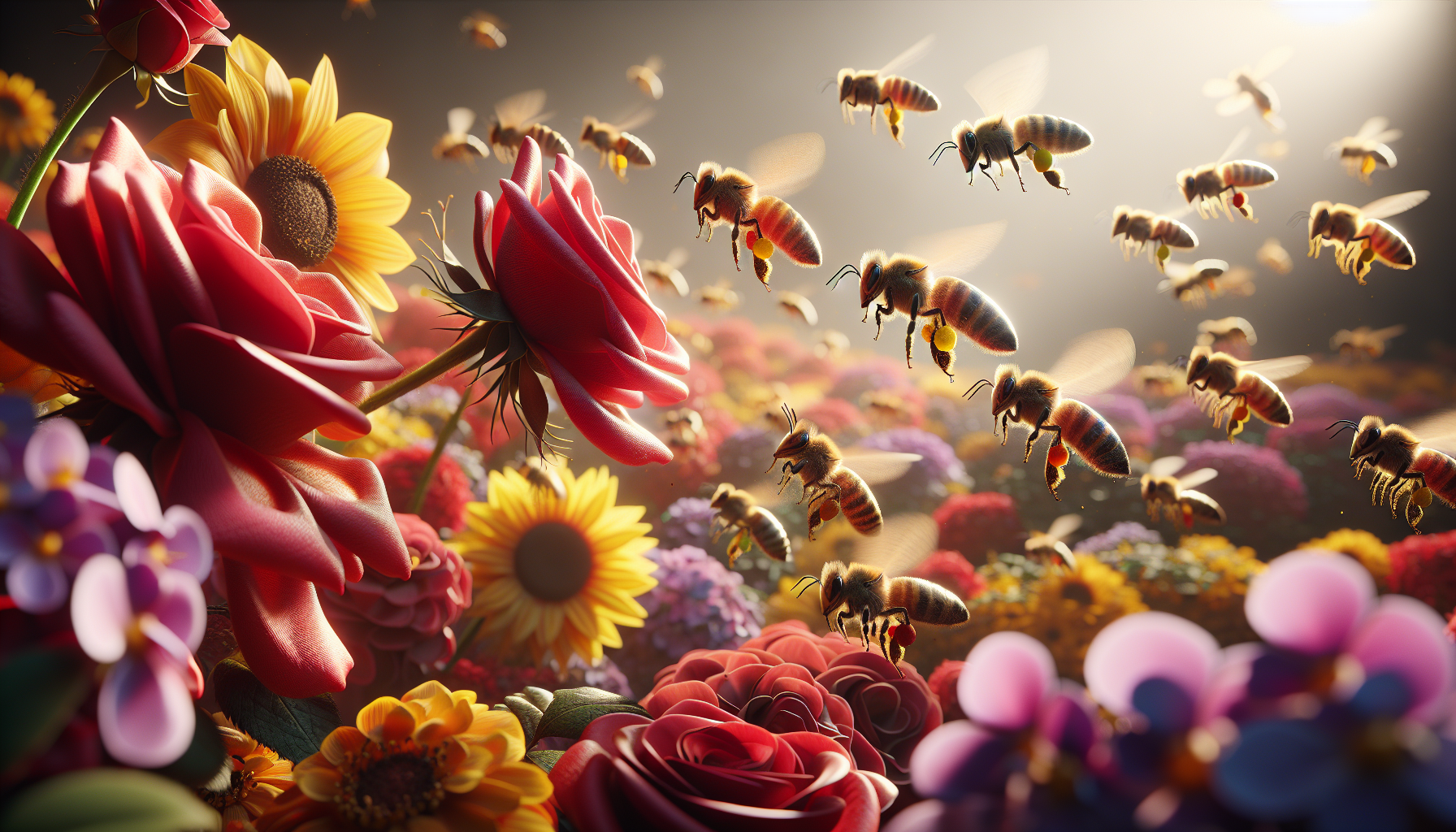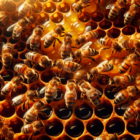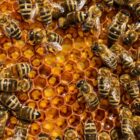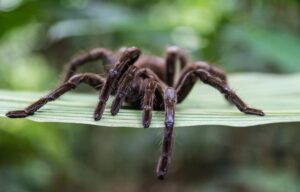Are honey bees the best pollinators?

Pollinators as honey bees play a crucial role in the intricate dance of life, facilitating the reproduction of countless plant species and sustaining ecosystems worldwide. From the vibrant hues of wildflowers to the bountiful harvests of agricultural crops, the contributions of pollinators are ubiquitous and indispensable.
With somewhere between 75% and 95% of all flowering plants reliant on pollinators for reproduction, the importance of these tiny yet mighty creatures cannot be overstated. Indeed, they are the unsung heroes of our food supply, providing essential pollination services to over 180,000 plant species and more than 1200 crops.
The Economic Value of Pollinators
Pollinators, often overlooked in their small-scale activities, wield a profound impact on global economies. Beyond their ecological significance, their diligent work translates into tangible economic benefits that reverberate across various sectors.
The economic value of pollinators transcends mere figures, but it is quantifiable nonetheless. An astonishing $217 billion is injected into the global economy annually through their pollination services alone. This staggering sum underscores the pivotal role that pollinators play in sustaining agricultural productivity and ecosystem health.
Among pollinators, honey bees emerge as agricultural powerhouses, driving significant economic gains. In the United States, honey bees contribute substantially to agricultural productivity, with their pollination services accounting for between $1.2 and $5.4 billion. Their diligent foraging efforts enhance crop yields and ensure the bountiful harvests of fruits, nuts, and vegetables that grace our tables.
A Ripple Effect Across Industries and Local Communities
The economic ripple effect of pollination extends far beyond the agricultural sector. Pollinator-dependent crops form the backbone of numerous industries, from food and beverage to pharmaceuticals and textiles. The vitality of these industries hinges on the continued health and productivity of pollinator populations.
In addition to their global economic impact, pollinators play a crucial role in supporting local communities. Small-scale farmers and beekeepers rely on pollinators to enhance crop yields and sustain livelihoods. Moreover, ecotourism ventures centered around pollinator habitats contribute to local economies, attracting visitors eager to witness the beauty of pollinator-dependent ecosystems.
The economic value of pollinators extends beyond immediate gains, serving as a cornerstone of long-term economic stability. By safeguarding pollinator populations and their habitats, we mitigate the risk of agricultural decline and ensure food security for future generations. Investing in pollinator conservation is not merely an environmental imperative but a sound economic strategy with far-reaching benefits.
Pollinators Effectiveness
While honey bees have long been hailed as the poster child of pollination, recent research has cast a spotlight on the comparative effectiveness of various pollinators. Contrary to conventional wisdom, studies reveal that honey bees do not always reign supreme in the realm of pollination.
Pollinator effectiveness refers to the ability of a species to transfer pollen from one flower to another, ultimately leading to successful fertilization and seed production. This effectiveness can be influenced by a myriad of factors, including the morphology of the pollinator, the structure of the flower, and the behavior of both the pollinator and the plant.
The Honey Bee Conundrum
While honey bees are undeniably prolific visitors to flowers, their effectiveness as pollinators varies depending on the context. In some cases, honey bees may indeed excel as pollinators, efficiently transferring pollen between flowers and contributing to high rates of fertilization. However, in other scenarios, honey bees may fall short in terms of effectiveness, failing to adequately deposit pollen on receptive stigmas or navigating challenges posed by complex floral structures.
Numerous comparative studies have sought to evaluate the effectiveness of honey bees relative to other pollinator species. These studies have yielded intriguing insights, challenging the notion of honey bee supremacy in the world of pollination. In fact, when compared to other pollinator groups, honey bees often do not emerge as the most effective pollinators.
Several factors contribute to the varying effectiveness of honey bees as pollinators. Floral morphology plays a critical role, with certain flower structures facilitating efficient pollen transfer while others present obstacles to honey bee foraging. Additionally, the behavior of honey bees, such as their foraging patterns and pollen-collecting techniques, can impact their effectiveness as pollinators.
Pollinator Diversity
The pollination landscape is rich and diverse, populated by a plethora of pollinator species ranging from bees and butterflies to birds and bats. Each species brings its own unique set of traits and behaviors to the table, influencing its effectiveness as a pollinator.
For example, buzz-pollinated plants, such as tomatoes and blueberries, rely on vibrations generated by bees, including honey bees, to release pollen from their anthers. In contrast, plants with specialized floral structures may be better suited to other pollinator species with different foraging behaviors.
The Role of Bees
Honey bees and wild bees, with their specialized adaptations for collecting pollen and nectar, are among the most effective pollinators in many ecosystems. Bumblebees, honey bees, and solitary bees collectively account for a significant portion of plant pollination. Studies indicate that bees contribute to the pollination of approximately 80% of flowering plant species worldwide. Their efficiency in transferring pollen between flowers makes them indispensable contributors to both natural ecosystems and agricultural landscapes.
The Importance of Hoverflies
Hoverflies, although often overlooked, play a crucial role in pollination as well. With their remarkable agility and widespread distribution, hoverflies visit a vast array of flowering plants, including many food crops and wildflowers. Research suggests that hoverflies contribute to the pollination of over 70% of global food crops and more than 70% of animal-pollinated wildflowers. Despite their smaller size compared to bees, hoverflies make a significant impact on plant reproduction through their frequent visits to flowers.
The Contribution of Other Insects
In addition to bees and hoverflies, other insect species also contribute to pollination to varying degrees. Butterflies, moths, beetles, and even ants play roles in pollination, although their contributions may be more limited compared to bees and hoverflies.
While not as efficient as other pollinators, beetles contribute to the pollination of a variety of plant species, particularly those with large, bowl-shaped flowers that are well-suited for beetle visitation.
Avian Pollinators
Birds, particularly hummingbirds and certain species of passerines, also serve as pollinators for a wide range of plant species. With their long, slender bills and specialized feeding behaviors, hummingbirds are especially adept at extracting nectar from tubular flowers. Research suggests that birds contribute to the pollination of approximately 5-10% of flowering plant species, particularly in regions with abundant bird diversity such as tropical rainforests.
Mammalian Pollinators
Although less common than insect and avian pollinators, certain mammals also play a role in pollination. Bats, in particular, are important pollinators for many night-blooming plant species, including agaves and cacti. Their nocturnal foraging habits and long tongues make them efficient pollinators for flowers that are adapted to bat pollination. Research indicates that bats contribute to the pollination of approximately 500 plant species worldwide.
Are Honey Bees the Best Pollinators?
In agricultural settings, honey bees often take center stage as key pollinators of various crops. Their highly organized colony structure, efficient foraging behavior, and ability to communicate the location of floral resources make them invaluable partners in crop pollination. Indeed, in crops such as almonds, apples, and blueberries, honey bees play a crucial role in ensuring bountiful harvests.
However, when it comes to native plant species, the picture becomes more nuanced. Studies indicate that honey bees may not always be the most effective pollinators for native plants, particularly those with specialized floral morphologies or reproductive strategies. In some cases, other pollinator species, such as bumblebees or solitary bees, may outperform honey bees in terms of pollination efficiency.
While honey bees are known for their floral constancy—where individual bees focus on one plant species during a foraging trip—this trait may limit their ability to transfer pollen between different plant species. In contrast, other pollinator species, such as bumblebees, may exhibit more generalist foraging behaviors, allowing them to facilitate cross-pollination between a wider range of plant species.










